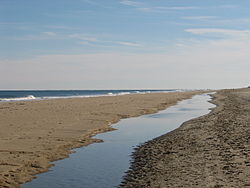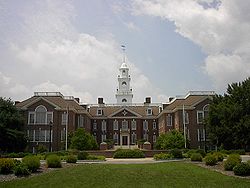| Name | County | Size [1] | Estab-
lished [5] | Image | Remarks |
|---|
| Alapocas Run | New Castle | 359 acres (145 ha) | 2002 |  | The park protects a portion of the Brandywine and is connected through a trail network to Wilmington and Brandywine Creek State Parks. It includes the Blue Ball Barn, originally built in 1914 by Alfred I. du Pont, which now houses the Delaware Folk Art Collection. |
| Auburn Valley | New Castle | 471.72 acres (190.90 ha) | 2008 |  | The former estate of the Marshall family includes the 1897 Auburn Heights Mansion and the Marshall Steam Museum's collection of antique steam-powered cars. |
| Bellevue | New Castle | 331.02 acres (133.96 ha) | 1976 |  | The former estate of William du Pont, Jr. includes tennis courts, a horse racing barn, and other recreational facilities, as well as Bellevue Hall, a replica of James Madison's Montpelier where du Pont spent his boyhood years. |
| Brandywine Creek | New Castle | 951.33 acres (384.99 ha) | 1965 |  | Much of this state park was once part of Henry A. du Pont's Winterthur estate and was used as a dairy farm from the 1870s through the 1920s. The rest, protecting land along the Brandywine, was preserved by William Poole Bancroft and his Woodlawn Trustees. The park adjoins First State National Historical Park. |
| Cape Henlopen | Sussex | 5,450.81 acres (2,205.86 ha) | 1964 |  | Delaware's largest state park includes the remains of World War II-era Fort Miles and its iconic observation towers which dot the cape's beaches on both the Atlantic Ocean and Delaware Bay. The National Harbor of Refuge and Delaware Breakwater Harbor Historic District and its two lighthouses are visible from the beaches. |
| Delaware Seashore | Sussex | 2,722.87 acres (1,101.91 ha) | 1965 |  | The park features beaches on both the Atlantic Ocean and Rehoboth Bay. It also includes the historic Indian River Life Saving Service Station. |
| Fenwick Island | Sussex | 375.47 acres (151.95 ha) | 1981 |  | In 1981 Fenwick Island State Park became a separate park; before that it was the southern part of Delaware Seashore State Park. |
| First State Heritage | Kent | | 2004 |  | Designed as an urban "park without boundaries," this park links historic and cultural sites throughout the capital city, Dover. |
| Fort Delaware | New Castle | 248.55 acres (100.58 ha) | 1951 |  | The state park preserves all of Pea Patch Island in the middle of the Delaware River, including the historic Civil War fortress which housed prisoners of war. |
| Fort DuPont | New Castle | 295.53 acres (119.60 ha) | 1992 |  | The former military base, named after Rear Admiral Samuel Francis Du Pont, was in use from the Civil War through World War II, and protects a stretch of land along the Delaware River and the Chesapeake and Delaware Canal. |
| Fox Point | New Castle | 93.35 acres (37.78 ha) | 1995 |  | A former brownfield site along the Delaware River, it was cleaned up and now offers trails and recreational activities. |
| Holts Landing | Sussex | 205.60 acres (83.20 ha) | 1965 |  | This park used to be a farm and boat ramp operated by the Holts Family. |
| Killens Pond | Kent | 1,493.7 acres (604.5 ha) | 1965 |  | The core of this park is a 66-acre millpond, but it also includes campgrounds, hiking trails, and a water park. |
| Lums Pond | New Castle | 1,789.53 acres (724.20 ha) | 1963 |  | Lums Pond was originally used to supply water for the Chesapeake & Delaware Canal when the facility still used canal locks. It is the largest freshwater pond in Delaware and features a new zip-line course. |
| Trap Pond | Sussex | 3,993.28 acres (1,616.02 ha) | 1951 |  | The park preserves the northernmost strands of baldcypress trees in the eastern United States. |
| White Clay Creek | New Castle | 3,559.31 acres (1,440.40 ha) | 1968 |  | White Clay Creek State Park preserves land around the White Clay Creek National Scenic & Recreational River. It borders Pennsylvania's White Clay Creek Preserve. |
| Wilmington | New Castle | 576.4 acres (233.3 ha) | 1998 |  | Wilmington State Parks is an urban park unit consisting of several smaller parks protecting land along the Brandywine River in the heart of Wilmington. The park includes Brandywine Park, Brandywine Zoo, H. Fletcher Brown Park, and Rockford Park. |
|

















